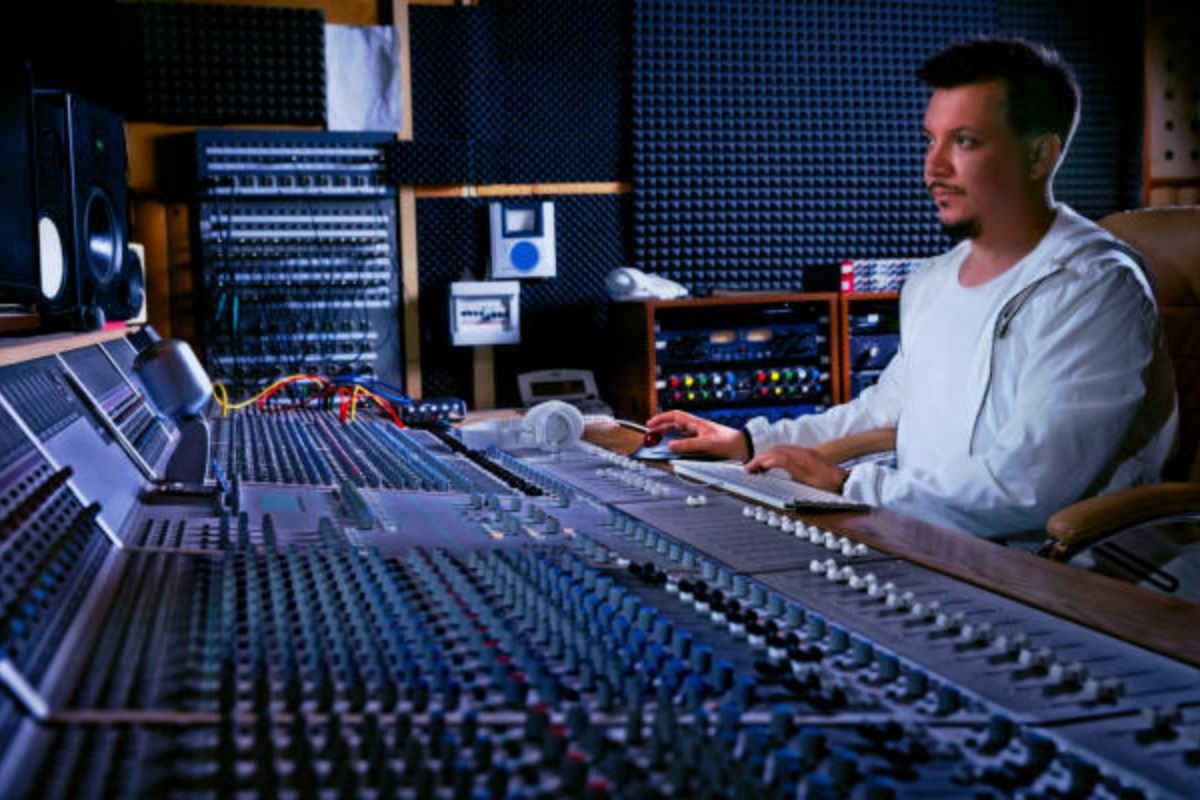Sound accompanies us everywhere we go, whether it is the music that we hear, the movies that we watch, or even the podcasts that we listen to on radio. Every smooth melody or sound-enhanced experience is the precursor to a sophisticated process of sound engineering. Time must be taken to master the science and art of sound. It begins in the classroom with practice and theory and grows up in the studio, where technology and art come face-to-face. For many, to begin with music production courses in Bangalore is the beginning of the birth of such an interesting career, as it gives theory and practical training in audio.
The Foundation: Academic Learning
It is at school that potential sound engineers receive an introduction to the basics of sound—how it travels, how it is captured, and how it may be altered. Acoustics, frequency, decibels, and waveforms are all words used to describe this role. They can seem technocratic to begin with, but they form the foundation for understanding how audio is going to respond under different circumstances.
Beyond theory, the classrooms also give hands-on training with machines. They get in touch with microphones, mixers, equalizers, and software. This type of training boosts their confidence levels and gets them equipped to deal with real-life situations. The classroom also offers a platform for discipline to be imparted. It offers a structured way to learning, where one progresses step by step from basic subjects to higher subjects like multi-track recording, sound design, and mixing.
Learning to Listen with an Ear for Detail
What a sound engineer hears most is hearing. Students are normally taught in class to identify different frequencies, tonal balance, and distortions. This sharpens their ear so that they are able to identify good and great sound.
For example, on the musical front, a mere average imbalance between treble and bass will completely alter the feel of the song. A background hum in a movie can steal the show from the lines. This listening ability becomes one of the greatest strengths of the student once he is in the studio environment.
Entering the Studio
While the classroom lays the foundation, true skill is honed in the studio. Within the studio is where theory and practice collide and imagination has no limits. It is where anything is possible—recording voices, setting beats, building soundscapes, or even composing audio for video and film.
In the recording studio, focus moves away from core study of sound into shaping it. Students who hitherto were testing gear in the classroom now record on professional recording equipment, digital audio software, and high-fidelity speakers. They learn how to run sessions, work with artists, and deliver each recording with the preferred emotion.
The Art of Recording
Recording usually begins at step one in the recording studio. It is not just a matter of technical skill but of sensitivity. Engineers know that each instrument and each voice has its personality, and recording them in the unadulterated form possible is job number one.
This process also learns patience. The perfect recording can take many tries, adjustments, and retakes. But each time the engineer tries it, he/she improves and learns.
Mixing: Blending the Elements
Mixing is blending all the recorded items—vocals, instruments, beats, and effects—so that they blend seamlessly into each other. It is similar to painting where each color must blend with the next color in perfect harmony.
A mastering engineer adds levels to all tracks, where the sounds need to be in the stereo field, and which effects define overall sound character. From adding reverb to put depth into equalization nips to remove muddiness, mixing is as much technical exercise of know-how as practice of intuitive imagination. This is typically when the classroom lessons on frequency and dynamics come back to bite us.
Mastering: The Final Polish
After mixing is complete, mastering takes over and gives the sound its last polish. Mastering renders the sound level and smooth on all devices that play it, from headphones to speakers, or even the car sound system. Mastering gives the final output with consistency, loudness, and clarity.
For the aspiring pros, mastering is one of the pillars. That special sound that separates a song or film pro and release-ready is what mastering accomplishes.
Creativity Meets Technology
Sound engineering is not machines working; it is technology and creativity. Students learn about process and tools, but studios allow experimentation. An engineer can mix digital effects with live sound, or musical styles to form something new.
Technology opens up infinite possibilities but leadership comes from creativity. – The greatest sound engineers are those who understand the technical side but also have the creativity to tell a story through sound.
Challenges on the Path
The journey from studio to classroom mastery is never obstacle-free. Technological failures, hours of recording, and stress associated with delivering perfection are all in store. There may also be times when the artist’s creative vision might be disproportionate to technical skill, and it is incumbent upon the engineer to make concessions.
These problems, nonetheless, come with learning opportunities. Each error is a learning experience and each successfully solved problem earns one confidence. Engineers, with time, become confident enough to rely on their intuition while at the same time having fun.
Developing a Professional Attitude
Mastering sound is more of an attitude than a skill. Great engineers are curious, flexible, and willing to continue learning. The industry is on the move, with fresh software, gear, and methods always on the horizon. A master regularly brings information up to date but remains rooted in class-room fundamentals.
The second most crucial characteristic is cooperation. Engineers are more comfortable collaborating with artists, producers, and directors in the studio. Effective communication, familiarity with the creative idea, and technical approaches make an engineer a productive team member in any production.
It is here that most of the students opt for specialized courses like sound engineering courses in Bangalore, by means of which they are capable of gaining extensive knowledge and sharpening their skills prior to applying them in professional studios.
From Learner to Master
The journey of sound engineering starts as school enthusiasm and evolves into studio expertise. It is all founded on the previous one—attaining theory, studying techniques, establishing an ear, operating with technology, and ultimately shaping sound into art.
What begins in acoustics and waveforms classes ultimately leads to the skill of creating music that reaches the soul or sound that brings pictures to life.
Conclusion
Sound engineering is an art and a science. It requires patience, technical skill, creativity, and an extremely fine hearing ear. Both of them shape people into professionals who can infuse life into sound at its best and purest form.


